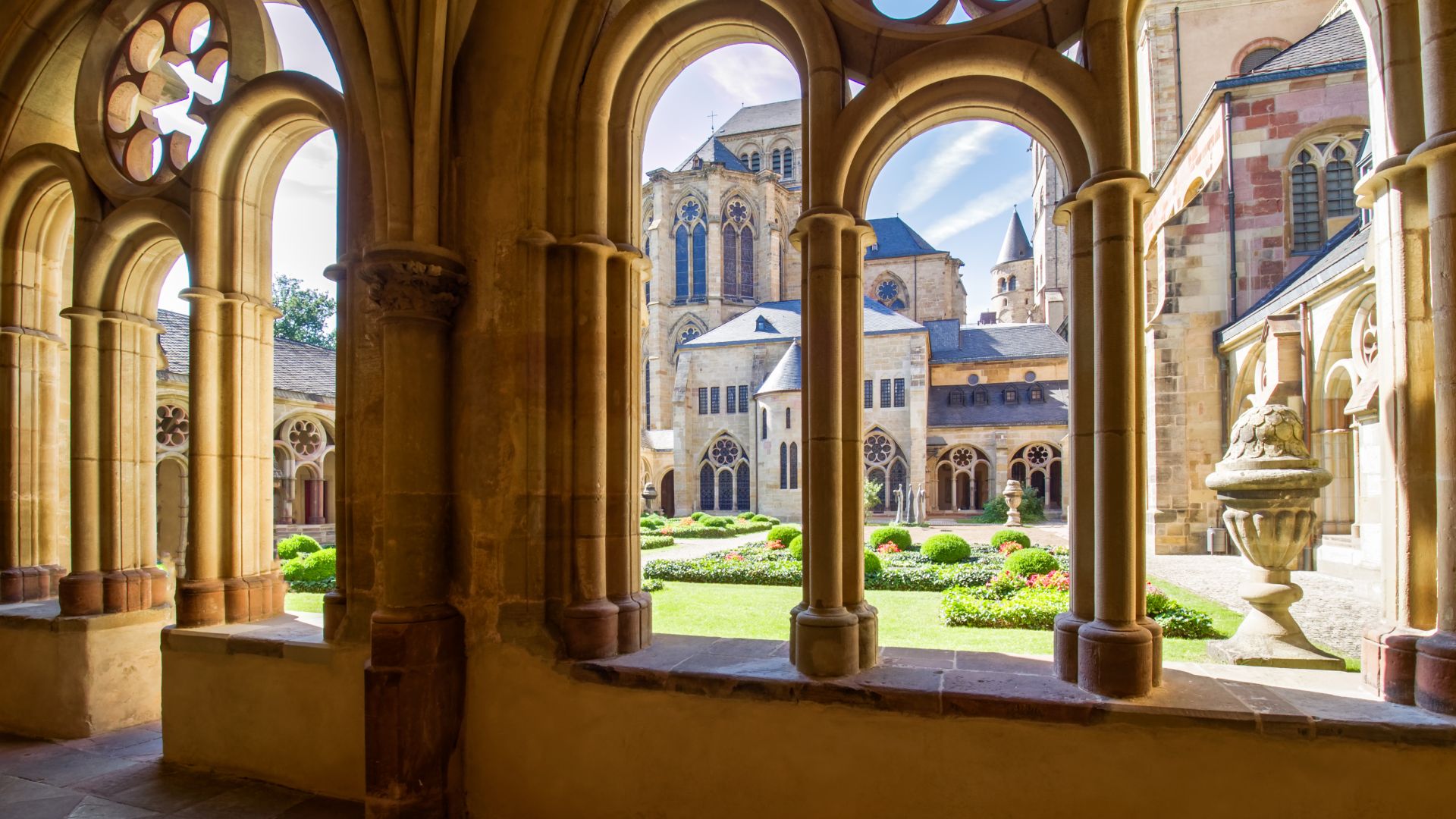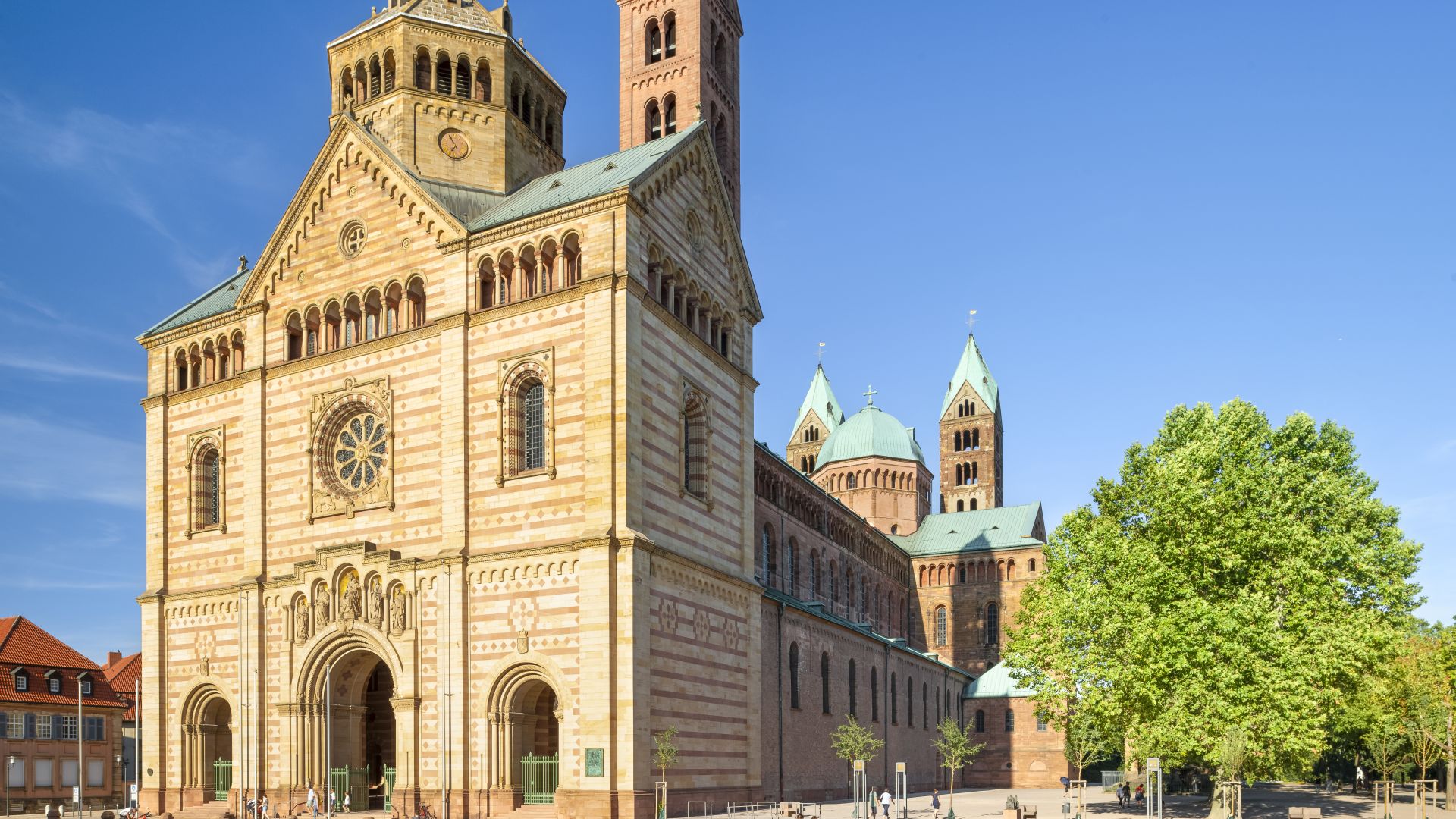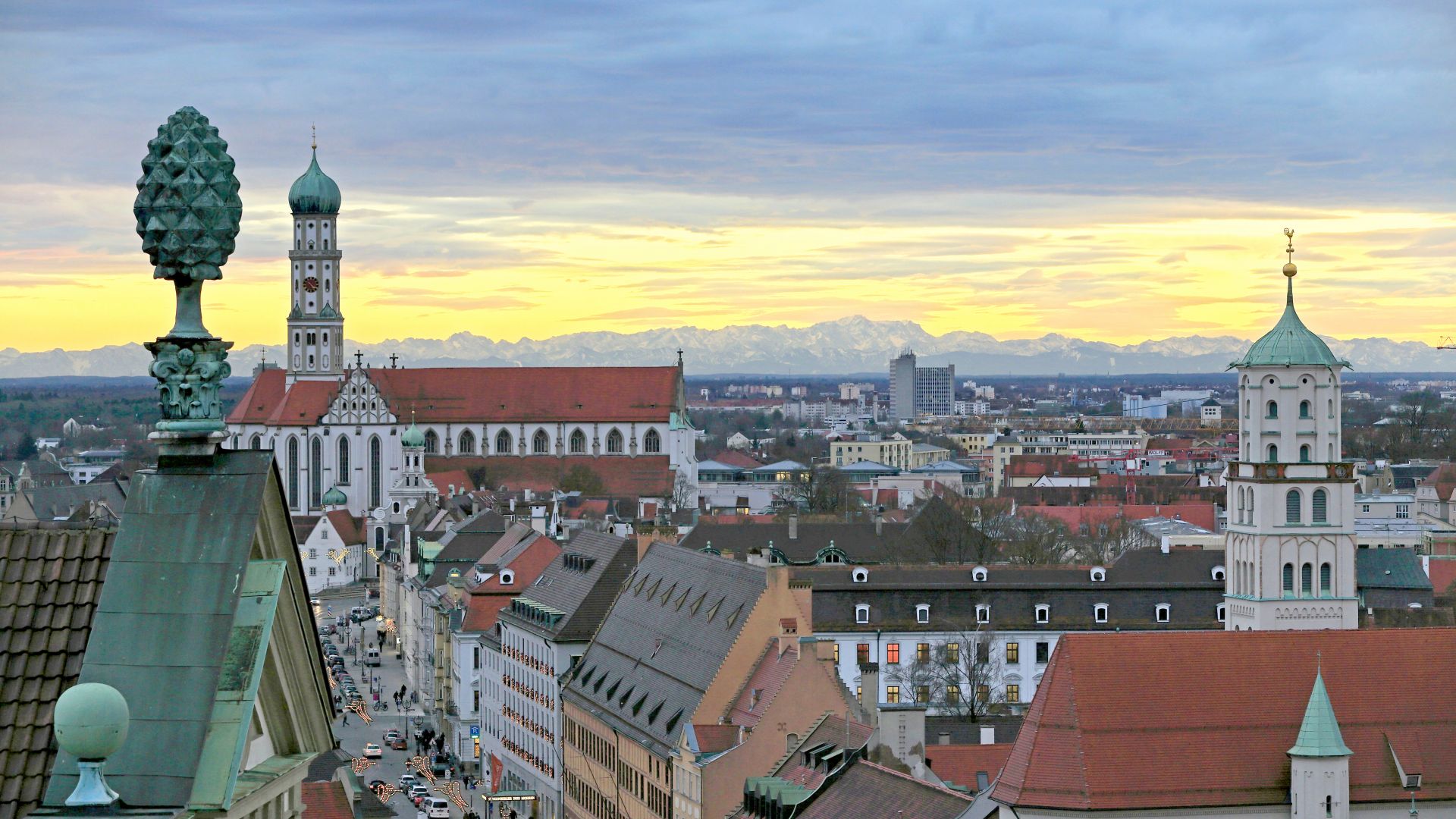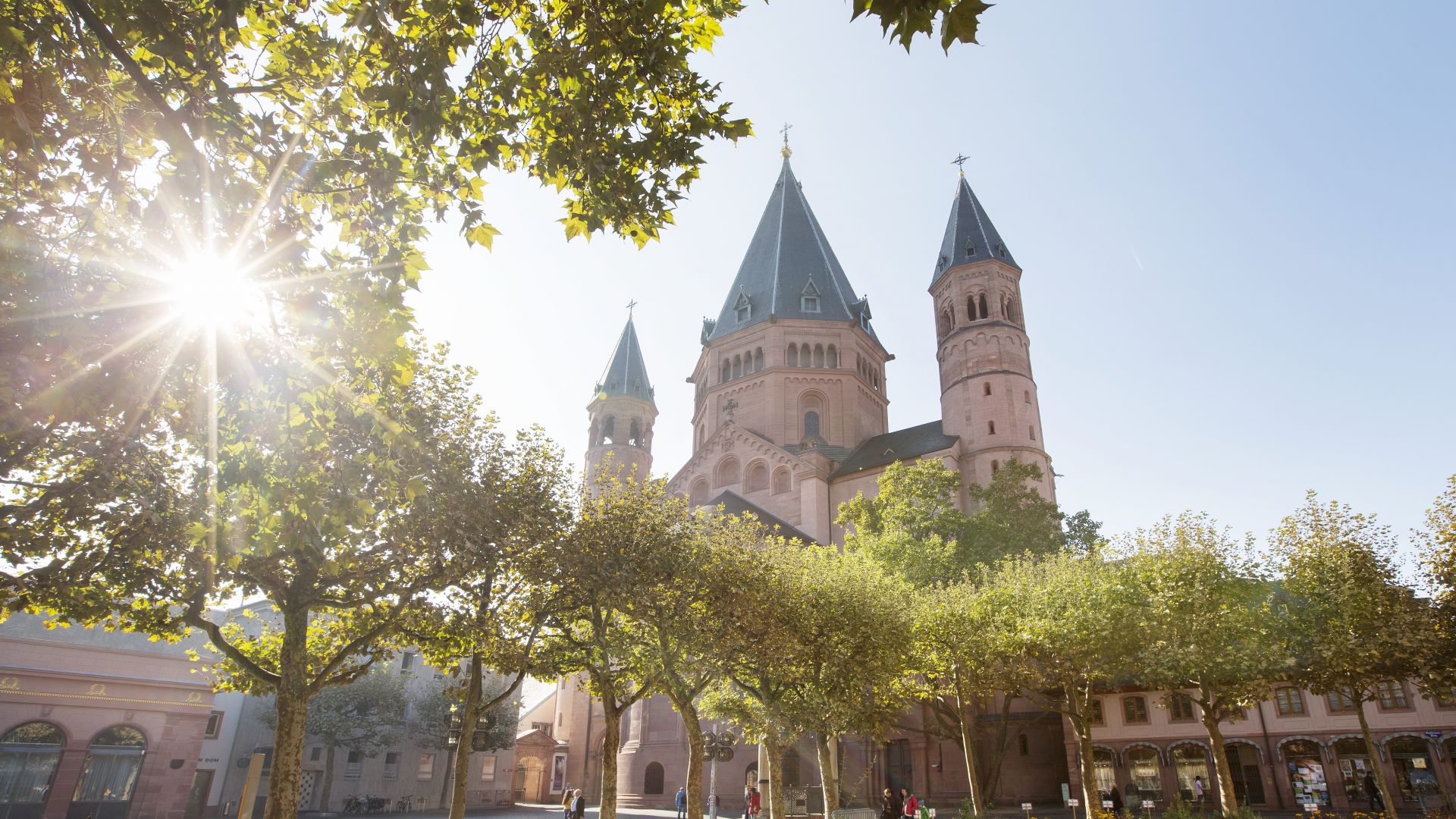Cities & Culture
Cities with Roman roots: whose idea was that? The Romans!
They came, they saw – they founded. First a camp, then sometimes a city. We're talking about the Romans, who also left impressive traces of their lives north of the Alps. In some cities, these are still clearly visible today.
Trier: Roman power on the Moselle
 Trier: Hohe Domkirche St. Peter, Innenhof, UNESCO Weltkulturerbe
©Getty Images (Fredy Jeanrenaud / EyeEm)
Trier: Hohe Domkirche St. Peter, Innenhof, UNESCO Weltkulturerbe
©Getty Images (Fredy Jeanrenaud / EyeEm)
One of Germany's oldest cities is associated with the Romans more than any other in this country. Aside from the city's founding merits, the Porta Nigra, made of sandstone, is still standing strong, even after 1,850 years! As the best-preserved Roman city gate north of the Alps, it is the star of the UNESCO World Heritage collection of Trier's Roman monuments, Cathedral and Liebfrauenkirche. They also include the Roman Bridge over the Moselle, the oldest bridge in Germany; the Basilica of Constantine; the remains of the once huge Barbara Baths; the Imperial Baths; and the amphitheatre with a capacity for up to 20,000 spectators. The Rhineland Regional Museum, provides an even deeper historical overview and displays many artefacts from that period (and much more). The cathedral, Hauptmarkt and Kurfürstliches Palais are almost overshadowed by such concentrated Roman presence. They quickly regain their relevance, however, when strolling through the charming Old Town.
Speyer: Roman and Romanesque
 Speyer: Speyer Cathedral
©DZT (Francesco Carovillano)
Speyer: Speyer Cathedral
©DZT (Francesco Carovillano)
The Romans founded this city on the Rhine around 2,000 years ago, that much is clear. However, hardly anything of this can be seen in the old cityscape; buildings from the Middle Ages now dominate. An outstanding example is the Altpörtel, one of the most beautiful and, at 55 metres, tallest medieval gate towers in the country. Not far away is Central Europe's oldest mikvah – an underground Jewish ritual bath. The four-towered, three-nave Imperial Cathedral of St. Mary, decorated with a World Heritage title, is unmissable. Not far from the largest Romanesque church still standing is the Historical Museum of the Palatinate, where the exhibition "Roman Era" tells the story of the first founders of the city. A tip for those who are more interested in vehicles, or in IMAX films and the like: visit the Technik Museum Speyer. In addition to an Antonov An-22 and a walk-in Boeing, the houseboat of the Kelly Family is also housed there.
Augsburg: awash with water
 Augsburg: evening shot of Maximilianstrasse with view of the Alps
©Regio Augsburg Tourismus GmbH (Norbert Liesz)
Augsburg: evening shot of Maximilianstrasse with view of the Alps
©Regio Augsburg Tourismus GmbH (Norbert Liesz)
Anyone digging in this Swabian city on the Lech should expect to find water. And remains from Roman times. In 2021, a sensational find was uncovered there, with half a tonne of coins, weapons and tools! It was further evidence of the oldest Roman military base in Bavaria, founded shortly before the birth of Christ, and another reason to quickly reopen the Roman Museum at a new location. Meanwhile Augsburg, as a former medieval imperial city, seat of the Fugger trading family (whose world's largest social settlement recently celebrated its 500th anniversary) and birthplace of playwright Bertolt Brecht, also has a lot to offer history buffs in other ways. However, the UNESCO World Heritage title was not awarded for Augsburg's Old Town, with its Renaissance town hall and proud churches, but rather for its top water management: these include four stream and canal systems as well as 24 other historical objects and collections from the water supply sector, including the two oldest existing waterworks and the three oldest existing water towers in Germany.
Mainz: a leader in history studies
 Mainz: Overlooking Mainz Cathedral
©DZT (Christof Herdt)
Mainz: Overlooking Mainz Cathedral
©DZT (Christof Herdt)
The Romanesque cathedral, which is over 1,000 years old, may be the centrepiece of the Rhineland-Palatinate's capital city, but its roots go back to Roman times. Subsequently, Mainz was founded around the time of the birth of Christ, with a legionary camp here. Although it did not have the same impact on the Roman Empire as Cologne, for example, kings were crowned here and Barbarossa's imperial festival, probably the most splendid festival of the Middle Ages, was held here. Furthermore, Jewish life flourished here from the 12th century onwards. The ShUM sites of Worms, Speyer and above all Mainz were declared UNESCO World Heritage Sites in 2021. The aristocratic palaces on Schillerplatz and the half-timbered houses in the Old Town are also showpieces. Hundreds of thousands of carnival fans throng the streets and alleys of the city during the "Meenzer Fassenacht" (Mainz carnival). There are sure to be many students among them, studying here at the university named after the inventor of modern printing, Johannes Gutenberg. Another Mainz resident who also made it to world fame thanks to an invention is Uğur Şahin from the mRNA vaccine company, BioNTech.